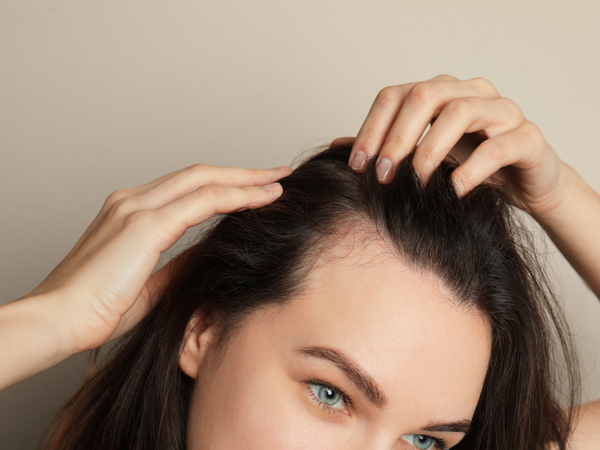Red Hair and Sulfates (SLS) – What You Need to Know to Protect Your Colour

Red Hair and Sulfates (SLS) – What You Need to Know to Protect Your Colour
Whether rich with henna or natural, your red hair needs careful care to stay glossy and pigment rich. There are lots of tips and tricks you can try, but you’d have to go a long way to find a hair expert that disagrees with this statement:
Redheads absolutely must avoid SLS (all sulfates in fact) and silicone.
What are Sulfates?
Sulphates, the most common ones of which are Sodium Lauryl Sulfate, also called ‘SLS’, or Sodium Laureth Sulphate (SLeS) are common in mainstream hair products as a degreaser.
They exist to cut through the heavy products we use on our hair and leave it squeaky clean, creating that ‘foaming’ effect many of us love.
Unfortunately, they’re extremely damaging. Not only do they lift dirt, but they also strip out the natural oil in your scalp, called sebum.
Whilst nobody wants greasy hair, or toxic residue from the environment on their scalp, sebum works to protect:
· Hair health
· Shine
· Scalp health
· Hydration
When you strip the scalp of sebum, it works overtime to produce more, creating an imbalance that leads to a greasy scalp. It also leaves the hair unprotected, dry and frizzy.
At this point, you may resort to heavy conditioners with silicones and waxes to fix the problem and return shine.
This creates heavy build up on the hair, leaving it lank, and hard to manage (not to mention destroying your beautiful red pigments). So, you need a harsh shampoo to strip it again and the whole cycle keeps going round, while your hair becomes increasingly damaged.
Why are sulfates worse for red hair?
Red hair is delicate. We redheads have up to 10% more hair than other hair types, but it tends to be drier, wiry and our pigment is not as stable.
Sulfates exacerbate this dryness in a way that shows much more on us then it might on our silky blonde cousins.
Aside perhaps from 4c hair types, red hair needs the most care and attention to show its best. It almost always benefits from a very gentle, natural approach
How will your hair benefit from a Sulfate-Free Approach?
We won’t lie, if you ditch the sulfates, it’s going to be a challenging few weeks at first. This is because the cycle of stripping and moisturising is a habit for your hair, which produces the sebum it thinks it needs based on what is demanded of it.
At first, it may still look greasy, possibly even a little more so. Panic not, it just means that your scalp is taking a wee while to get the message that the nasties are gone. Stick with it and after about 14 days, it should settle down.
You will almost certainly have some product build up, which can make things much worse. We recommend a skikakai treatment. Shikakai means ‘fruit for hair’, and is a natural way to cleanse the hair gently without damage.
For the same 14 days, your hair may feel a bit ‘matted’ or clumpy when washing. This is because the product build up is starting to shift, but the natural conditioners haven’t had a chance to get through it all yet.
Neutral cassia is a brilliant way to make this process easier. It won’t add colour to your hair (apart from enhancing any golden lights). It will, however, soften and add shine, while working with your hair instead of against it.
It may feel a bit odd at first to not have the same amount of lather, but lather doesn’t mean ‘clean’ it means ‘chemical’.
Stick with it and it’ll all be worthwhile.
After two weeks, it can be a good idea to add a treatment or two into the process.
We LOVE mixing Amla (Indian gooseberry), which works to add softness and volume, with warmed Neem Seed Oil. Neem seed is soothing for irritated scalps and helps to re-balance natural oil production, so it’s the perfect way to support your red hair’s journey to natural care.
If you have frizz, it’s also fab to add a little shine. Simply warm one or two drops in your palm and add to ends before styling for a protection and gloss.
Learn more about naturally caring for your red hair in our hair care library.



